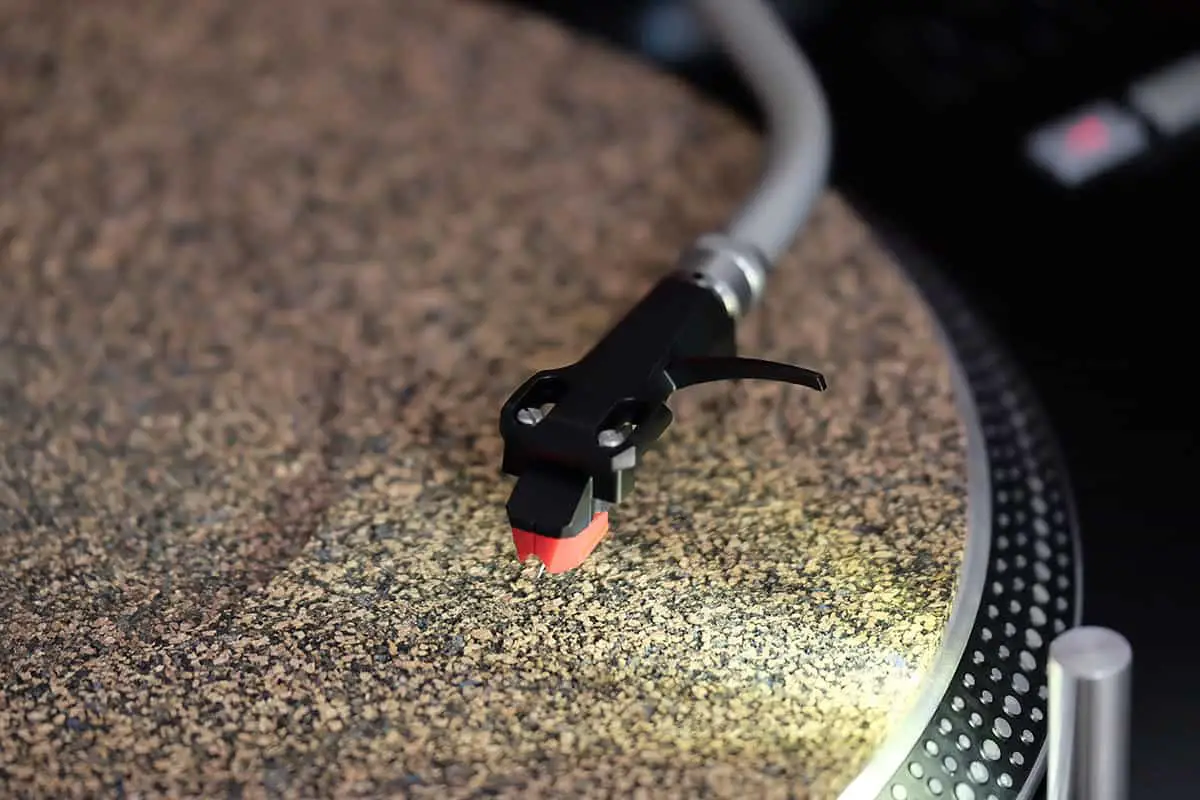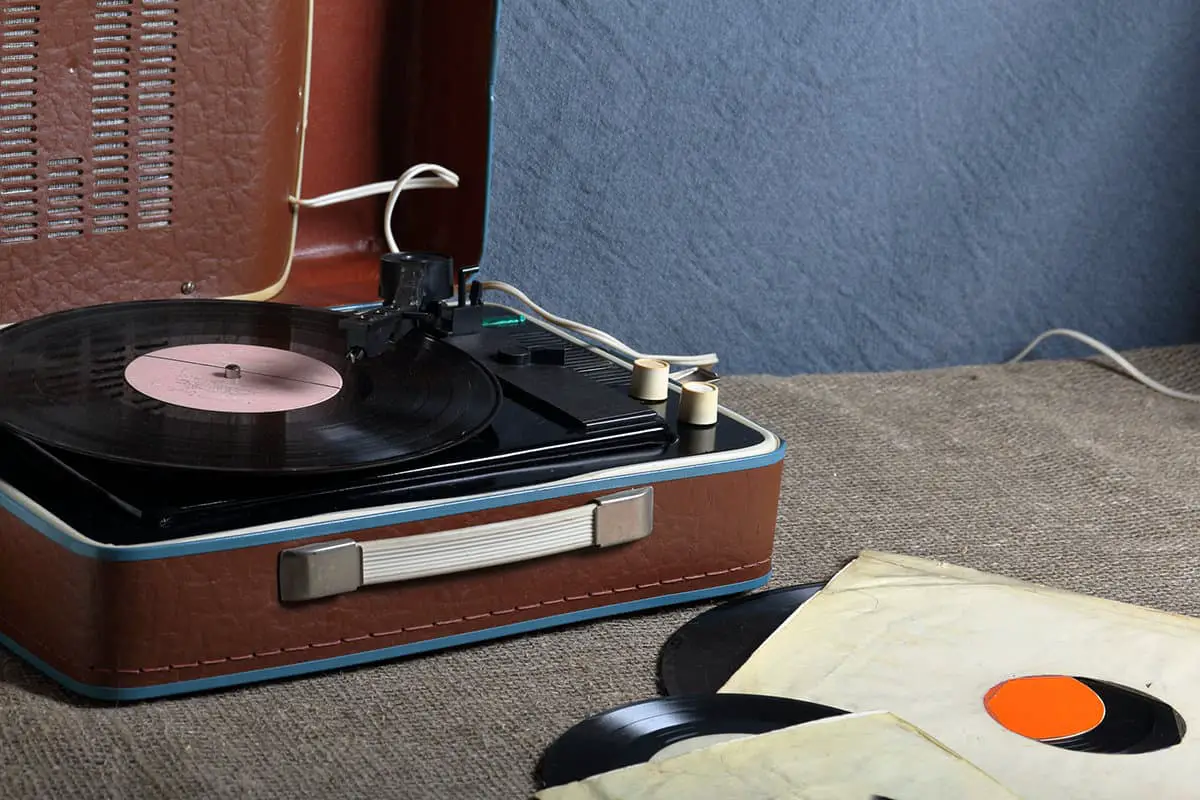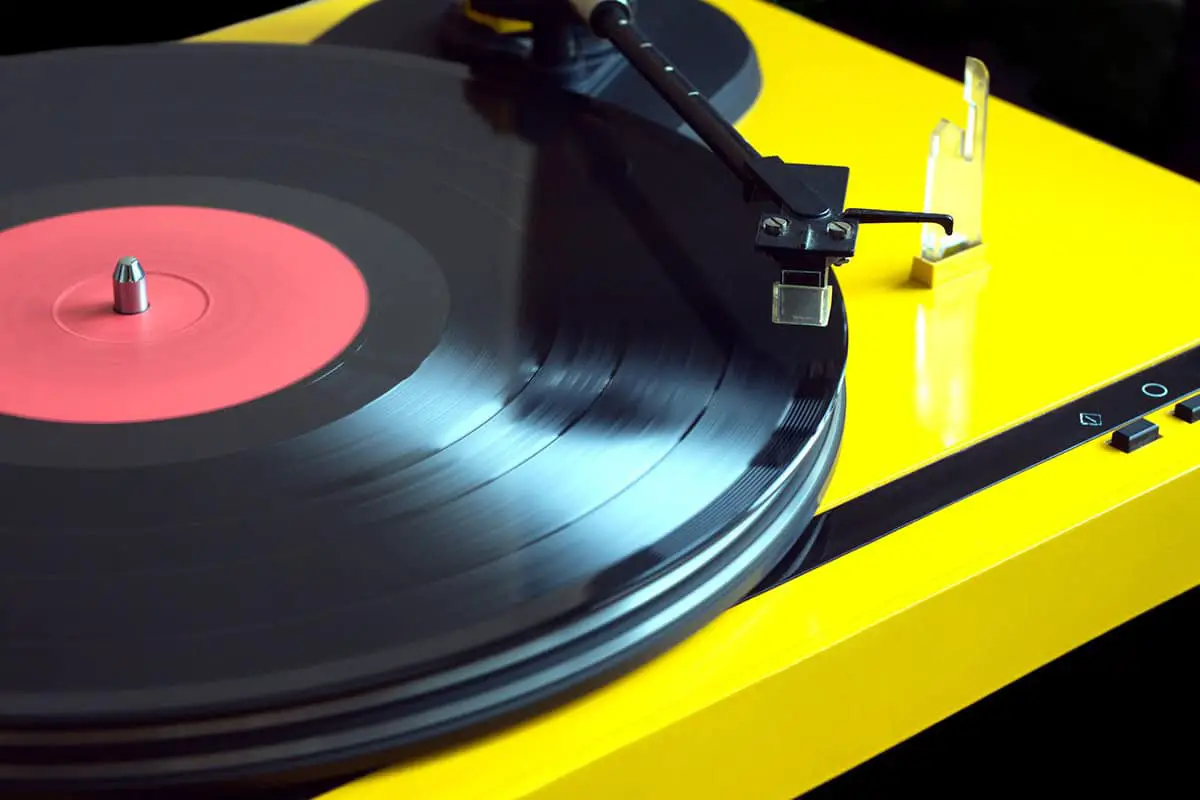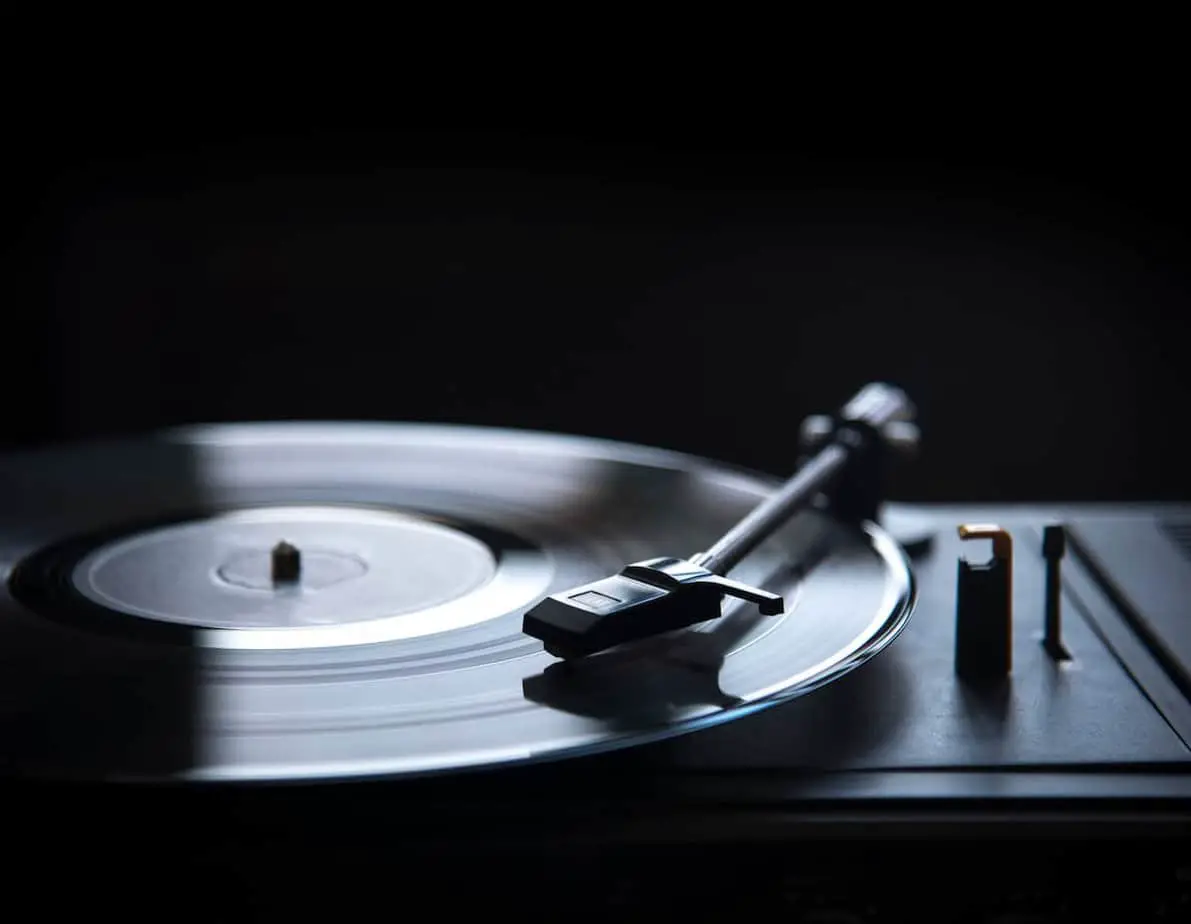This post contains affiliate links.
Slipmats are essential for an excellent vinyl experience, both for DJing or just recording. A slipmat can help produce a better sound when scratching, so the platter doesn’t stop when in use. Knowing the difference between a rubber mat, a felt mat, and a slipmat is essential when experimenting with different sounds.
You need a slipmat for your record player for scratching or DJing. Slipmats can help when mixing, but they also change the sound and feel of your turntable. You may eventually decide that you don’t like how it sounds or feels, but it’s a worthwhile accessory for your turntable nonetheless.
This article will explain and explore what record slipmats do, if you need one for an acrylic platter, whether they affect the overall sound, and if you can make one yourself.
Table of Contents
What Does a Slipmat Do?
Record players sometimes come with felt slipmats or rubber mats. There’s a bit of a difference between the two, and it’s up to you whether or not you choose to use one. Nevertheless, most pros recommend the use of slipmats.
A record slipmat is a safe, soft surface that protects against scratches and scuffs. They’re fantastic for smooth transitioning or mixing. However, they do collect dust and lint and, if they’re too thin, can sometimes cause a suction-like effect that causes your music to sound off.
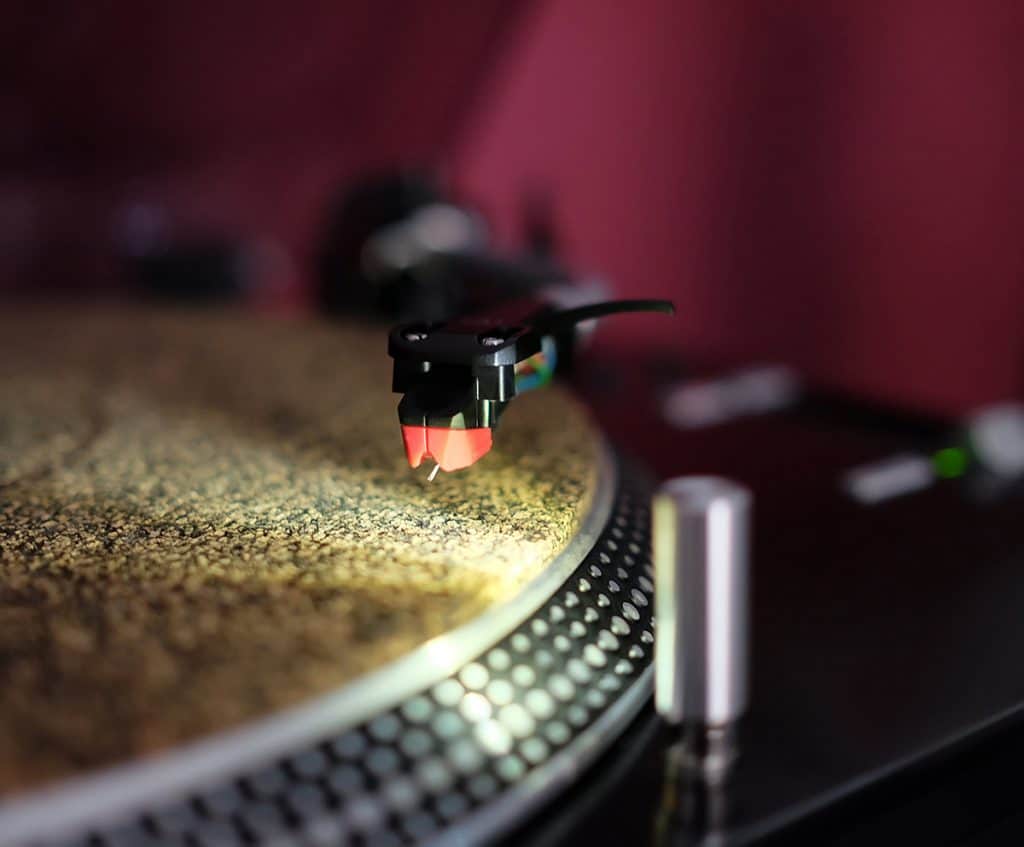
A slipmat is different from a rubber mat; rubber mats are made to hold the record in sync with the platter. Slipmats slip onto the platter, allowing a DJ to manipulate a record on a turntable while the platter rotates. It doesn’t just aid the DJ in moving the record, but it also adds to the aesthetics of your turntable.
DJs recommend using a thin felt platter because they don’t make wind-like sounds like plastic mats, and they’re easier to manipulate than rubber mats. The best mats bend slightly and are pretty thin.
How Do You Use a Slipmat on a Record Player?
You can use a slipmat on a record player by placing it on an empty turntable platter. You then put a record over the slipmat and start the record player. There’s also a technique called “record stacking,” which involves placing a slipmat on a record and then placing another record on top of it.
Slipmats can be used on any record player but are primarily designed for DJs who scratch or mix; it essentially allows the DJ to manipulate the record quickly.
The DJ will place the slipmat on the platter. Some slipmats are made out of different materials, such as felt. Companies are creating more innovative designs with a plastic-like material on one side. That allows for a better slip and less stoppage when the DJ manipulates the track.
You don’t want to put your record right on the turntable because it can damage your record. It may cause scratches on one side. It’s a fantastic idea to use a rubber mat or slipmat on your platter.
You don’t need a slipmat if you listen to a record player. Slipmats are designed for DJs who scratch and mix. A rubber mat that comes with most record players is perfectly suitable to keep your record from being damaged.
It’s entirely up to you whether or not you choose to use a slipmat made of whatever material you like.
Slipmats come in many different materials and thicknesses. Many DJs prefer a thin felt slipmat because it doesn’t affect the sound as much as a plastic slipmat. It also allows for less stoppage when scratching or mixing.
Some DJs use a method known as record stacking, allowing for quicker access to the next record. If you decide to use this method, the best way to do this would be to place a slipmat between those records. Many DJs prefer this popular solution.
Do You Need a Slipmat for a Acrylic Platter?
Suppose you have an acrylic record player; you don’t need a slipmat. You’d only need a weight or clamp to mate the vinyl to the platter. It’s a fantastic choice if you don’t want to worry about using slipmats on your record player.
You don’t need a slipmat if you’re using an acrylic record player. Nonetheless, it’s possible to use a slipmat with an acrylic record player if you so desire. There won’t be any adverse effects on sound quality.
You shouldn’t have to worry about scratching the surface of your records. Acrylic platters are smooth, and there isn’t a need for a slipmat. However, if you want to stay on the safe side, using a slipmat might be a good choice.
You may decide that you want a slipmat just for the looks because some slipmats have very creative designs on them.
However, they’re not essential with acrylic platters. Acrylic platters are made of material similar to records. Thus, it won’t scratch the surface. This is similar to why a needle won’t damage your records.
Do Slipmats Affect Sound?
Many different types of slipmats are mainly designed for DJs. Turntable mats can come in felt, plastic, and even leather sometimes. These materials can affect the sound of your vinyl, and you should test each fabric until you find the right slipmat for the sound you’re looking for.
Different material slipmats can affect the sound of vinyl music. Each mat’s made differently with varying levels of thickness and various types of material. The best mats are usually made out of felt; however, that’s all based on preference.
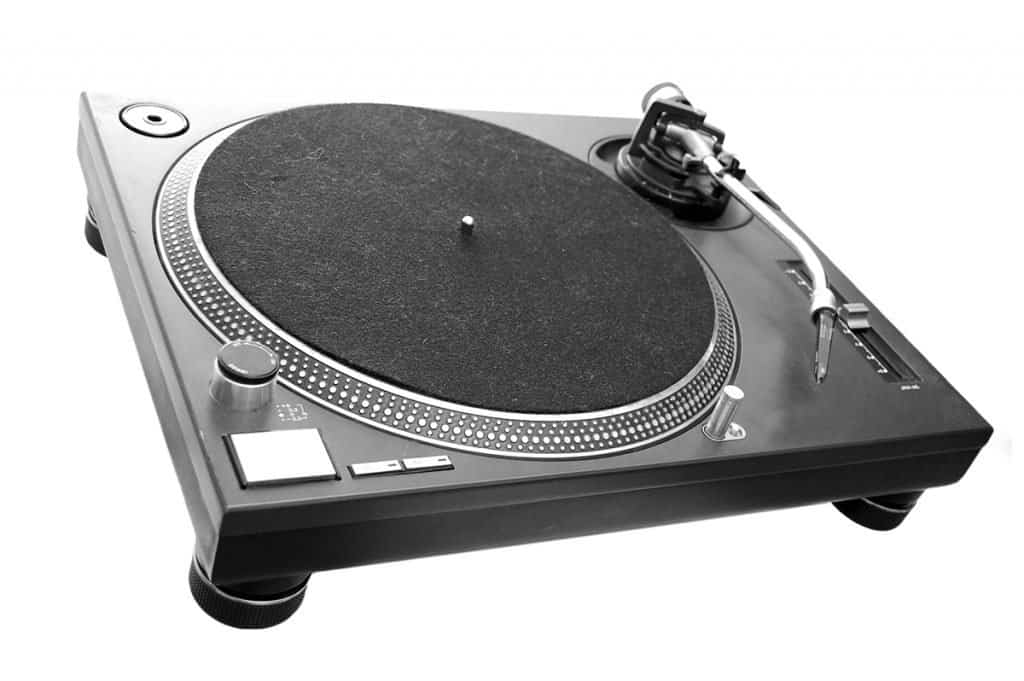
If you’re learning how to DJ, scratch, or mix, it’s essential to use a slipmat; rubber mats don’t allow for the same ability because they’re designed to grip the record rather than let it slip. Using a rubber mat isn’t the best idea for someone learning to manipulate a form.
Thin plastic slipmats aren’t recommended either. Plastic slipmats can make a wind-like sound, though the slip is great for scratching. It’s excellent when you’re practicing.
However, you’ll notice the plastic sound in the background when recording, which isn’t great for professional recordings.
Can You Make a Slipmat Yourself?
You can make a slipmat yourself. Making your own felt slipmat might be the best choice for you because you can decide how thin or how thick you want your slipmat. Making a slipmat yourself also gives you control over the materials, allowing you to control the sound and feel.
Slipmats are a fantastic idea for DJs and, if you’re only getting started with the hobby, you may not want to spend money on a slipmat. If you’re going to make your own with your materials, that’s perfectly acceptable.
There are a few essential items you may need for your do-it-yourself slipmat, these are:
- Thin cardboard
- Record for template size
- Scissors and pen
- Felt fabric
- Hot glue gun or glue
Here are the steps:
- Trace your record shape onto the cardboard. Trace the center hole as well.
- Cut out the traced cardboard.
- Place the felt fabric over the round cardboard piece. Don’t cut around the cardboard just yet; you want to glue it first and cut around the material after the glue is dry. Repeat on the other side of your cardboard.
- Cut a hole in the middle of your fabric.
Many companies make mats that are sometimes too thick and don’t allow you to manipulate the record smoothly.
Conclusion
Record players are a great way to experience music in many different ways. Whether you wish to learn how to DJ or listen to music more authentically, slipmats are essential for the safety of your record.
Slipmats keep records from being damaged or scratched, allowing a DJ to manipulate a record. However, you don’t need one for your record player if you’re not a DJ or not mixing or scratching. A simple rubber mat will do.
Slipmats may affect the sound of a record, so be sure you pick the suitable material for the sound you want; it’s about preference.
VacationVinyl.com is a participant in the Amazon Services LLC Associates Program, an affiliate advertising program designed to provide a means for sites to earn advertising fees by advertising and linking to Amazon.com. We also participate in other affiliate programs which compensate us for referring traffic.

